
[This article is part of a series this week on the JFK assassination coinciding with our November 18 webinar entitled “New Evidence, Old Questions: The Latest Declassified JFK Files.”—Editors]
Don Reynolds is a name forgotten to history, though he appears to hold a key to understanding who was behind the assassination of John F. Kennedy.
On November 22, 1963, the morning that Kennedy was killed, Reynolds was testifying in a closed-door session of the Senate Rules Committee about a kickback scheme he was involved in on behalf of Lyndon B. Johnson
Reynolds’ testimony was going to lead to Johnson being dropped from the 1964 Democratic ticket and potentially going to jail.
Reynolds was still being questioned at 2:30 p.m. EST when a secretary burst into the meeting room with the news from Dallas.
The hearing was put on hold and Reynolds’ testimony was kept secret for many years.
After Johnson’s reelection in November 1964, FBI Director J. Edgar Hoover—Johnson’s close friend and Washington neighbor—told Reynolds that Johnson would kill him if he did not leave the U.S.

Reynolds subsequently fled to the Bahamas, returning only after Johnson’s presidency ended.
His farmhouse in Oakland, Maryland, was burned down in a mysterious fire in what Reynolds took to be a threat, and Reynolds faced FBI surveillance and harassment at the hands of the Internal Revenue Service (IRS).[1]
LBJ’s Mortal Wound
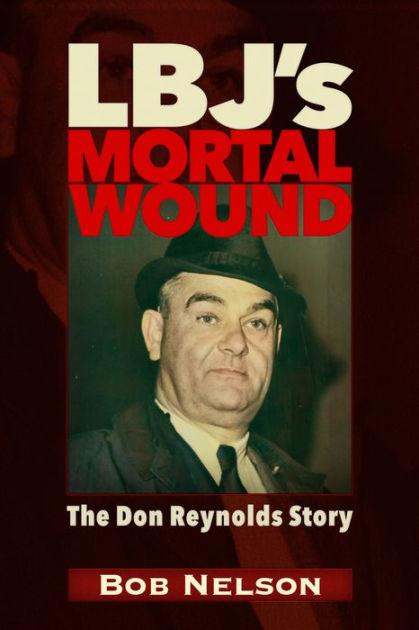
Reynolds’ story is told in a new book by his nephew, Bob Nelson, called LBJ’s Mortal Wound.
The title derives from a quote from Bobby Baker, Johnson’s top aide who spent eight months in federal prison on tax-evasion charges, who said that Johnson “might have suffered a mortal wound” from Reynolds’ revelations—that is, if JFK had never been killed.[2]
Nelson juxtaposes fond memories he has of his “Uncle Buck” with the secret intrigues behind his role as a whistleblower regarding LBJ’s kickback schemes. At one point, Nelson’s family was visited by the FBI seeking information on his uncle, whom one author called “the final spark of the crime of the century.”[3]
Nelson acknowledges that his uncle was implicated in some corrupt dealings, though considers his story to have a “heroic and redeeming element” since he “decided to come clean and blow the whistle.”[4]
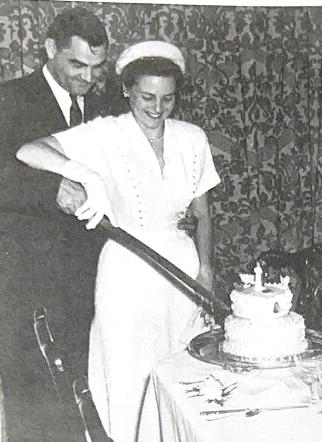
Reynolds’ wife Jerry considered her husband to be a “Walter Mitty type character fighting as one man against the establishment” who was “determined to tell the truth about what he saw and knew was going on in the Hill even if he got hurt….Don admitted that he had done some things wrong [Bobby had too], but the real danger to our country lies in the circle of influence and corruption which stems from the heart of the Hill.”[5]
A Potential Political Scandal Comparable to Watergate
A graduate of West Point who served in the U.S. Air Force and as a U.S. consular official in Berlin, Reynolds first came into contact with Johnson after Johnson had experienced a heart attack in the mid-1950s and wanted to buy life insurance.
A genius at insurance who lived in Silver Spring, Maryland, Reynolds was able to help Johnson but Johnson wanted some kickbacks, which Reynolds described as “more like a shakedown.”[6]
Reynolds testified that, as part of the deal, he was required to kick back advertising money on KTBC in Austin, which Johnson owned and a $585 Magnavox stereo set to Johnson.
Reynolds sold Johnson two $100,000 life insurance policies, one of which was legitimate; the other of which was fraudulent—a bagman’s fee for Reynolds having helped funnel more than $20,000 in illegal contributions to the 1960 Johnson presidential campaign ($20,000 would be around $215,000 today).[7]
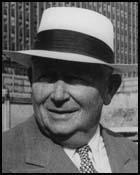
The illegal contributions had been channeled from a bond deal for the construction of the District of Columbia football stadium in Washington (later called RFK Stadium after RFK’s assassination].
Reynolds was the financial bagman for this deal along with Matthew McCloskey, a Philadelphia construction company owner and Democratic Party fundraiser who served as Treasurer of the Democratic National Committee from 1955 to 1962.[8]
In addition to revealing all this, Reynolds told the Senate Rules Committee of seeing a suitcase full of money which Bobby Baker described as a $100,000 payoff to Johnson for his role in securing a $6.5 billion contract for General Dynamics to build the Tactical Experimental Fighter Plane fighter jet (TFX-later F-111) at its plant in Fort Worth.[9]

To protect himself, Johnson arranged a Senate cover-up and illegally used the FBI and IRS to abuse and intimidate Reynolds and prevent a key witness, his aide Walter Jenkins,[10] from testifying before the Senate Rules Committee when it took up an investigation, a potential obstruction of justice.
Nelson suggests that Johnson’s transgression represented a potential scandal of Watergate proportions if it were ever publicly revealed.[11]
This was the belief of Senator John J. Williams (R-DE) who headed the Senate Rules Committee’s investigation, which was prompted by Reynolds’ disclosures.
Williams was known as the “conscience of the Senate” and had a reputation as a “fair but relentless investigator of corruption.”[12]
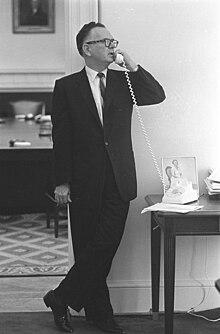
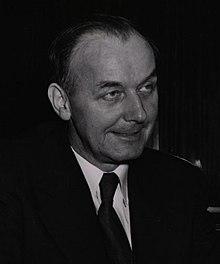
South Carolina Bad Boys
A key part of the Senate Rules Committee’s investigation centered on Bobby Baker, Reynolds’ business partner, who had helped deliver mob money to Johnson in exchange for Johnson helping to kill anti-racketeering legislation in the Senate. (Both Reynolds and Baker were from South Carolina, Baker from the Low Country and Reynolds from the Swamplands.)[13]
Baker also served as “the pimp” for Johnson, along with President Kennedy and Senator George Smathers (D-FL), introducing them and other congressmen to beautiful women at the plush Carousel Resort Hotel he owned in Ocean City, Maryland, and the Quorum Club he helped establish across from the Senate Office Building, where they could relax with “party girls.”
Don Reynolds was allegedly in on the call-girl ring, receiving some of the kickbacks. He described to Senator Williams his attending sex orgy parties in Washington with Bobby Baker.[14]

Politically Assassinating a Sworn-in President
During his testimony, Reynolds was interrogated by Republican Minority Lead Counsel Clayton Burkett Van Kirk and Lorin Drennan, an accountant from the Government Accounting Office.
Reynolds laid out the documents that he believed implicated the sitting vice president as he talked about what he knew.
Van Kirk later stated that “Don presented a good case. He could back it up. Everything he said he had a receipt for. It’s hard to argue with a receipt, a cancelled check, or an invoice. It’s hard to argue with documentation.”[15]
When the secretary burst in with the news of Kennedy’s assassination, Nelson writes that “the enormity of it stunned Uncle Buck…almost immediately he could feel the small hairs rise at the nape of his neck…He had just testified against the vice-president…who was now about to be the president of the United States….He thought to himself with no small sense of wonder, that he had in effect, just politically assassinated the newly sworn-in president; the evidence he had provided was enough to force LBJ to resign or be impeached.”[16]
According to Nelson, Reynolds paused for a moment in his thoughts and then “reached for the incriminating documents that littered the table and said that the Rules Committee wouldn’t need them now. Given testimony involving the vice president is one thing, but when it involves the president himself, that is something else. You can just forget that I ever said anything if you want to,” he said, quietly but firmly.[17]
“Too late,” responded Van Kirk, the documents were in the custody of the Senate Rules Committee.[18]
Johnson on the Ropes
Although Reynolds’ testimony was given behind closed doors, his appearance before the committee had been written about in newspapers beginning in October 1963, which alerted Johnson that he was in trouble.
Nelson wrote that, according to Earl Deathe, LBJ’s assistant at his ranch, Johnson “knew this would be trouble. He had gotten things that he had not paid for, and my uncle knew his secrets. Receiving kickbacks was a charge that could spell the end for a politician.”[19]
Life magazine, furthermore, had loaded a missile targeting LBJ. Attorney General Robert F. Kennedy, who supported Reynolds’ whistleblowing, was feeding the magazine information about Johnson’s connection to Bobby Baker, which would have forced Johnson off the 1964 ticket.[20]
Life magazine editor James Wagenvoord stated that, during the assassination week, there had been two articles on the Baker scandal already published but nothing linking LBJ directly to the scandal. The third issue would have been published two days after the assassination. “It was all coming from Bobby, we had him. LBJ would have been out and facing prison time. It was coming from the Justice Department.”[21]
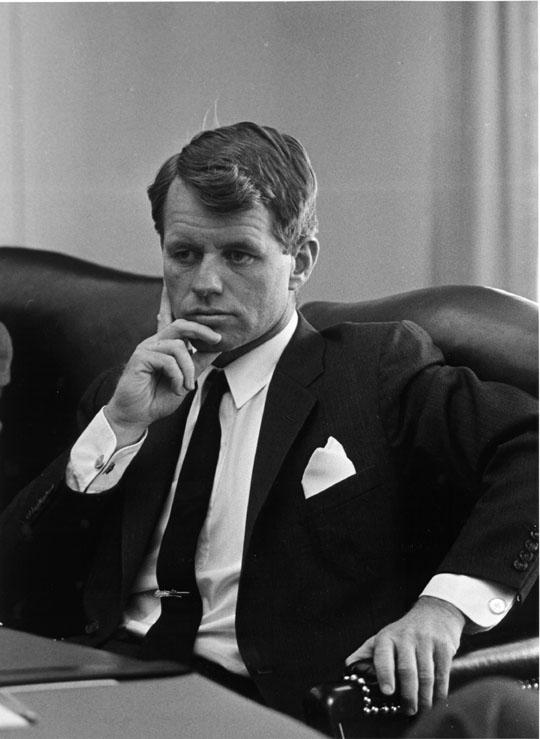

JFK Assassination Saves Him
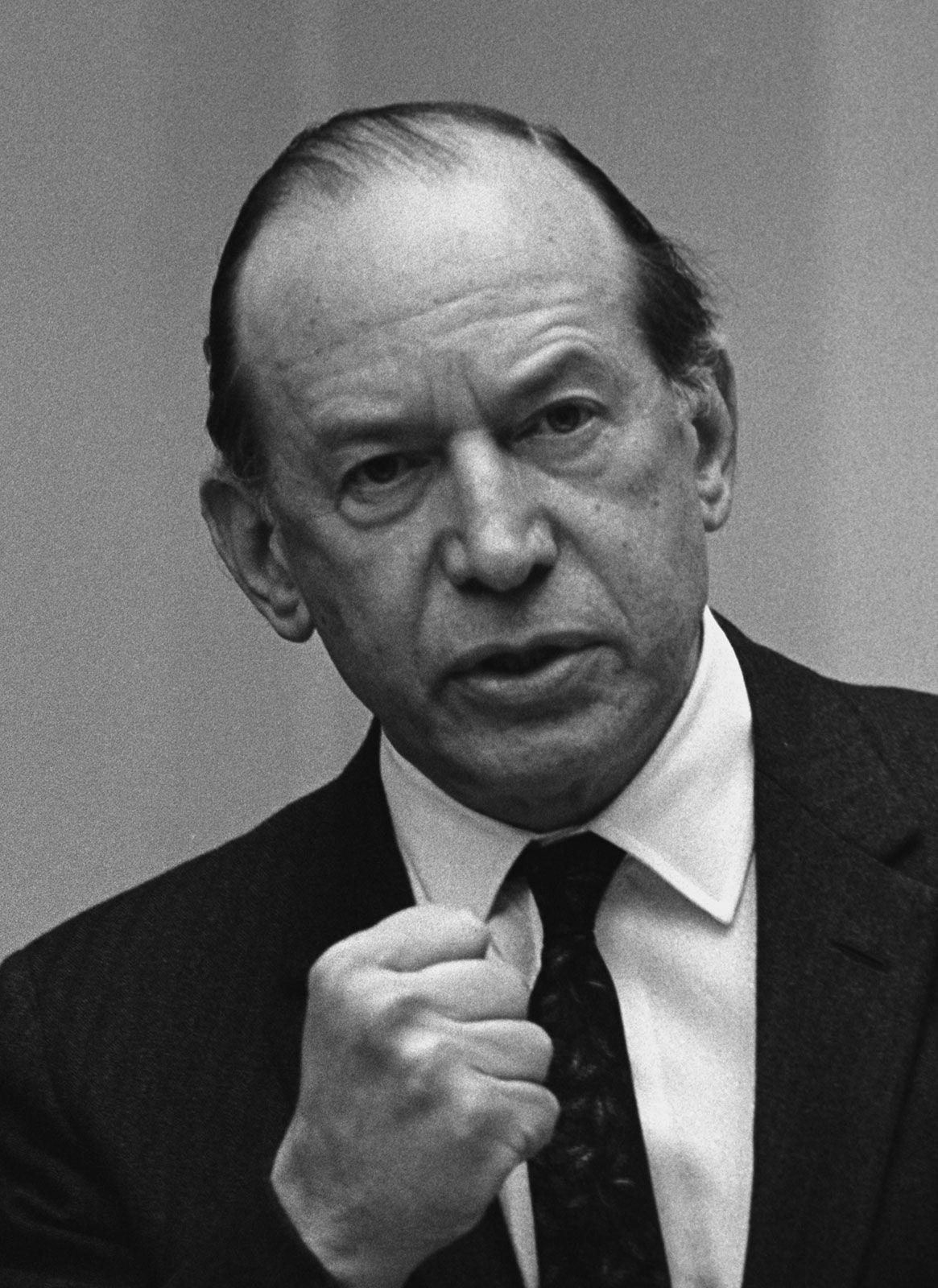
When Wagenvoord asked his boss, Phil Wootton, how he could spike the story on LBJ after JFK’s assassination, Wootton responded “Jim, we can’t kill two presidents in twenty-four hours.”[22]
After JFK’s assassination, one of the first phone calls LBJ made, aboard Air Force One, was to his attorney Abe Fortas asking him: “What did Reynolds say?”[23]
Johnson’s Political Survival Instinct Further Kicks In
In January 1964, Reynolds again testified to the Senate Rules Committee in a closed session and then Congress voted to release that information publicly.[24]
Johnson subsequently pushed Senate Democrats to shut down any further inquiry and made it clear that he would stop Walter Jenkins from testifying.[25]
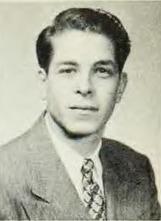
Calling Reynolds “psychotic” and a “bum” whom he said “he had never met,”[26] Johnson ordered a full field investigation that included his family, friends and acquaintances, and told IRS Commissioner Sheldon Cohen to “get tough on him [Reynolds].”[27]
When J. Edgar Hoover gave Johnson Reynolds’ FBI file, Johnson became upset because, as he told Hoover, “there wasn’t a goddam thing to indict him on.”[28]
Johnson in turn ordered his press secretary, George Reedy, to “contact Time, Newsweek and The Washington Post, to put pressure on them to stop printing adverse stories on the affidavit that Walter Jenkins had submitted, which had been ordered to protect Johnson and was in direct conflict with Reynolds’ testimony.[29]
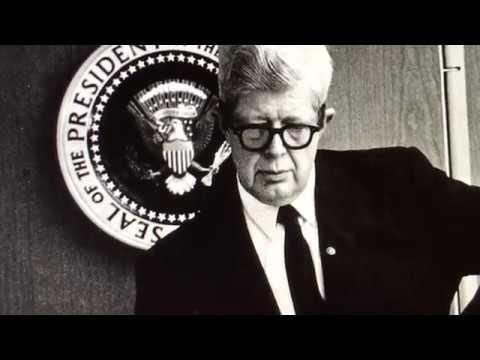
Nelson wrote that Jenkins’ affidavit reminded him “of something my uncle said: ‘They answer their own questions’—they pick the questions to ensure that the answers to those questions exculpate the actual wrongdoers.”[30]
On January 27, on the advice of Abe Fortas, Johnson called a press conference and said that the stereo he had received from Reynolds as part of the kickback arrangement was a gift from the Baker family—which was false as the invoice was sent to Don Reynolds and not Bobby Baker. Johnson left the conference quickly, not taking any questions.[31]
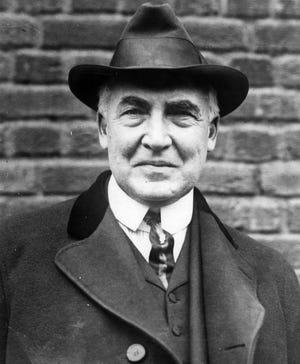
Afterwards, Johnson was recorded on White House tapes telling Fortas “I don’t want to go against your advice—because you have to defend me and if I don’t do what you tell me, I’ll be in a hell of a shape—but if I do, I’m going to jail. That’s just how I see it.”[32]
Johnson later told Attorney General Nicholas Katzenbach: “I don’t want to be a Harding!”—a reference to Warren Harding, whose presidency was ruined by the Teapot Dome and related scandals.[33]
Washington Post Star Columnists Throw Johnson a Lifeline
Just as things were looking bad for Johnson, he got a break when Reynolds’ Air Force and State Department files were made public in an article written by the famous columnist Drew Pearson in The Washington Post.
LBJ later recounted to aide Bill Moyers that the files had been leaked. They showed that Reynolds had lied about his West Point record (he had flunked out) and that he had engaged in black market activity in Germany and furnished false information to U.S. government officials.
These revelations were used to discredit Reynolds’ testimony. Pearson’s colleague Jack Anderson boasted that he had exposed in his column the unreliability of the Williams committee’s star witness, “whose sordid record as an informant goes back to the heyday of Joseph McCarthy.”[34]

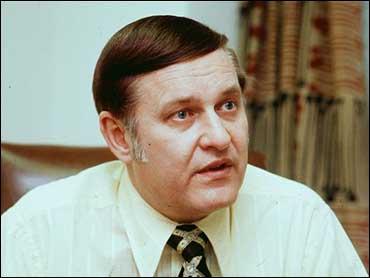
The latter was a reference to Reynolds having provided information in the early 1950s to Senator Joseph McCarthy and the FBI about certain people’s alleged communist affiliation and sexually deviant behavior.[35]
Reynolds considered Pearson and Anderson’s writing to be a smear job that included information, which was mostly true but irrelevant.
Reynolds told The Washington Post that “whatever my past, this has absolutely nothing to do with the recent events involving LBJ, Bobby Baker, or Walter Jenkins.”[36]
Pearson’s muckracking journalism and exposés generally targeted conservatives and anticommunists like Reynolds rather than liberal figures like JFK and LBJ whose long record of political and personal corruption he ignored.[37]
Further Whitewash
The same day that Pearson’s article was released, Reynolds wrote to Senator Williams detailing a call he had received from Bobby Baker at the Racquet Club in Montego Bay, Jamaica, in which Baker had discussed the insurance policy on the then-vice president [Johnson] and wanted to know how much of a kickback he could get on the insurance commission.
Reynolds told Baker to never use the word “commission” on the telephone, and Baker changed it to “rebate.”
Reynolds also received a call that day from Walter Jenkins, who told him to work out the arrangement (for Johnson’s kickbacks) with Bobby but to be sure it was in cash.
After the Post articles were published, the Democrats used their 6-3 majority on the Senate Rules Committee to shut down the Williams probe into LBJ’s kickbacks. Williams said he disagreed completely with the conclusions of the committee, which had been adopted for partisan purposes to protect a Democratic Party president.[38]

In his book Forty Years Against the Tide, Senator Carl Curtis, an ally of Williams, characterized a 1965 Senate investigation into the same matter as “a whitewash, a coverup, a disgrace to the senators who subscribed to it. It is an endeavor to protect the politically powerful and make difficult a successful prosecution of Bobby Baker.”[39]
Bobby Baker confirmed this assessment, stating in a post mortem of his political battles that Reynolds had told the truth about the D.C. stadium deal before the Senate Rules Committee and that the senators “didn’t hold McCloskey [another key figure in the scandal]’s feet to the fire”—nor obviously Johnson’s.[40]
“I might as well be in Nazi Germany…”
Like other whistleblowers, Reynolds suffered for his truth-telling. His once profitable insurance business was destroyed and he was forced into exile in the Bahamas where he received a call from Bobby Baker who told him that he had “caused problems for some big men…if you talk any more to the attorneys, Williams, or agree to return to the U.S. to testify as a state witness—you won’t survive.”[41]
Reynolds subsequently wrote to his attorney that he would remain outside the United States until “the present administration and tyranny was eliminated.”[42] In another letter to Williams, who visited with him in the Bahamas, Reynolds wrote that “the powers unleashed by the Tyrannical acts of King Belshazzar (Johnson) will know no bounds.”[43]
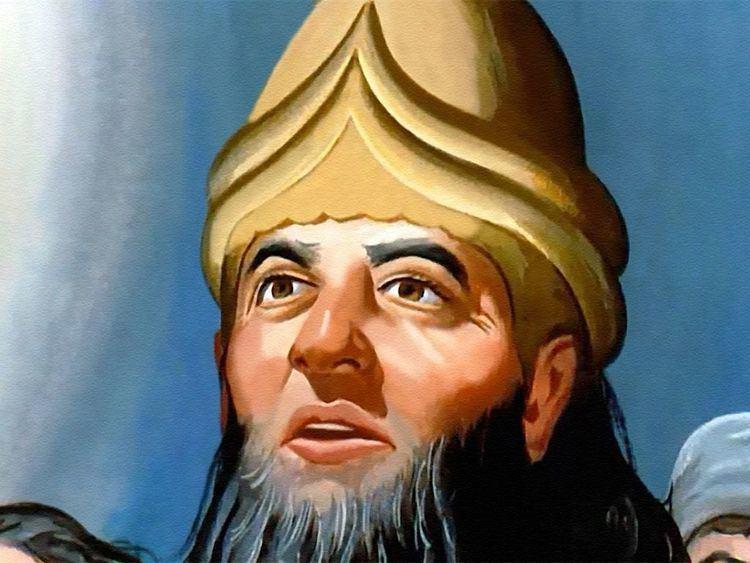
Prior to his departure to the Bahamas, Reynolds had received threatening phone calls and wrote to Williams: “I might as well be in Nazi Germany. They are out to get me, and they are using every government agency and every dirty trick in the book to wreck my business.”[44]
Before the outbreak of the mysterious fire that destroyed his remodeled farmhouse in Oakland, Maryland, a neighbor spotted a car that he did not recognize driving down Reynolds’ road in a remote location. The neighbor told Reynolds that “either someone was very lost, or someone had very specific reason to be driving down that isolated, dead-end road.”[45]
Key Historical Figure
Don Reynolds may be an obscure figure; his story, however, is an important one in exposing the persecution of whistleblowers in modern America along with what biographer Robert Caro called LBJ’s “bottomless capacity for deceit.”[46]
Even more significantly, Reynolds offers a key clue as to who was behind the Kennedy assassination, as his testimony before the Senate Rules Committee—combined with the scheduled exposures in Life magazine—would have ended Johnson’s political career if JFK had not been assassinated.
JFK assassination expert Robert Morrow told me that “the Kennedys, in November 1963, were about to drop a hydrogen bomb of humiliation and embarrassment on the head of Lyndon Johnson, a man who could not take even the slightest criticism. LBJ was a cornered animal, and he struck back with lethal effectiveness in Dallas on 11/22/63.”
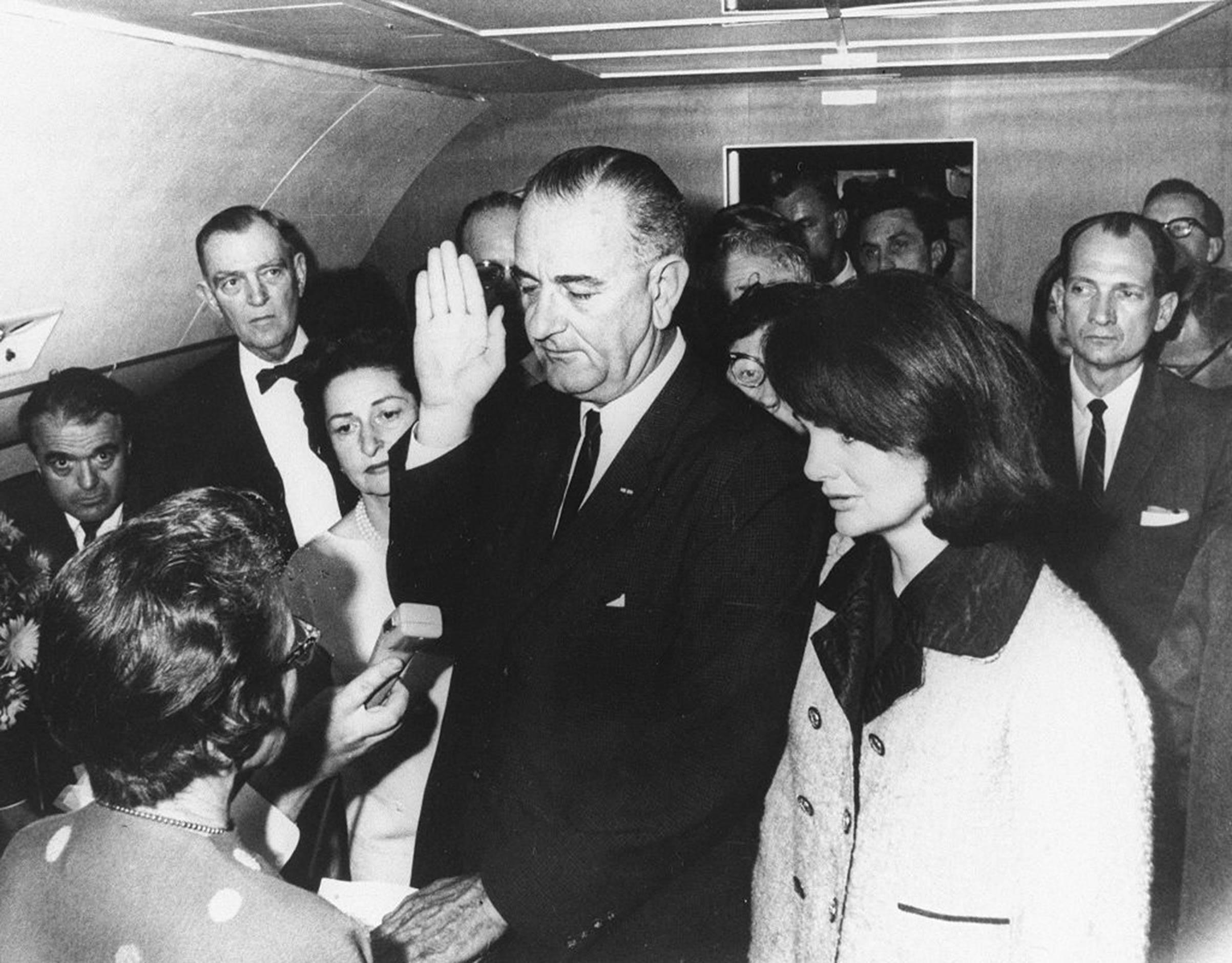
Johnson’s role in planning and covering up the JFK assassination is detailed in a number of books, including Barr McClellan, Blood, Money & Power: How L.B.J. Killed J.F.K. (New York: Skyhorse, 2011), and Sean Fetter, Under Cover of Night: The United States Air Force and the Assassination of John F. Kennedy, Vol. 1 (Lake Success, NY: Arlington Press LLC, 2023).
These and other works make clear that a network of Texas oilmen and attorneys and CIA operatives close to Johnson helped to carry out the crime of the 20th century, whose motive was laid bare by Donald Reynolds on the morning of November 22, 1963.
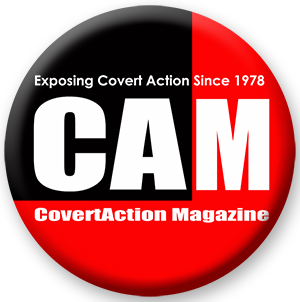
The fire was likely arson and caused by Lyndon Johnson. ↑
Baker had told Reynolds on Inauguration Day 1/20/61 that “the s.o.b. John Kennedy would never live ot his term” and that he would “die a violent death.”
Bob Nelson, LBJ’s Mortal Wound: The Don Reynolds Story (Walterville, OR: Trine Day, 2024), 19. ↑
Nelson, LBJ’s Mortal Wound, 14. ↑
Nelson, LBJ’s Mortal Wound, 40. Jerry Reynolds wrote that, as Don’s wife, she was “frightened by the exposure of the ties of underworld characters to our politicians, as well as those of the entrepreneurs who have so much to gain or lose in business with the government.” The stress from Don’s ordeals put strain on the marriage and led to Jerry and Don’s divorce. Walter Mitty was the character in a 1939 New Yorker story who was an ineffectual dreamer who envisioned himself smoking a cigarette in front of a firing squad. Walter Mitty was often referenced in popular culture in the mid-20th century. ↑
Nelson, LBJ’s Mortal Wound, 2. ↑
Nelson, LBJ’s Mortal Wound, 63. According to Reynolds’ testimony, $25,000 in cash from the insurance deals was paid directly to Bobby Baker. ↑
Nelson, LBJ’s Mortal Wound, 53. A kickback of $35,000 on the RFK stadium contract was made by McCloskey, a close friend of Kennedy who is said to have invented the $100-a-plate dinner. In 1962, McCloskey was appointed U.S. ambassador to Ireland in 1962, though in 1964, he was forced to resign from this position because of the kickback scandal. According to Reynolds’ revelations, $25,000 was scheduled through Bobby Baker for the 1960 Democratic Campaign Fund. Baker had initiated the dealings, but Reynolds served as the “bagman”—the funnel by which illegal funds were transferred. ↑
See Edgar F. Tatro, “The TFX Scandal’s Link to the JFK Assassination Conspiracy,” Garrison: The Journal of History & Deep Politics, January 2023, 70-155. Boeing had been poised to get the contract because it had been determined that Boeing could produce the plane better and more cheaply. Having been informed of possible improprieties in the transaction, Senator Henry “Scoop” Jackson (D-WA) requested that Senator John McClellan (D-AR) pursue an investigation that would have exposed Johnson’s corruption. After Kennedy’s assassination, Johnson shut down the McClellan investigation; it was only resumed in 1969, after Johnson had served out his presidential term. ↑
Jenkins was forced to resign as Johnson’s aide in October 1964 after he was apprehended in a YMCA men’s room in Washington, D.C., on a morals charge (implying gay sex). ↑
Nixon’s Vice President Spiro Agnew was brought down by revelations of his receiving kickbacks. ↑
Nelson, LBJ’s Mortal Wound, 26. ↑
Reynolds was born in Darlington County, South Carolina. ↑
Nelson, LBJ’s Mortal Wound, 27. Under the call-girl ring, the girls got $50 and had to give back $20. ↑
Nelson, LBJ’s Mortal Wound, 28. ↑
Nelson, LBJ’s Mortal Wound, 16. ↑
Idem. ↑
Idem. ↑
Nelson, LBJ’s Mortal Wound, 22. ↑
Idem. Life magazine at the time of Johnson’s death had eight or nine reporters combing the LBJ ranch and asking pertinent questions about how Johnson had amassed a fortune of more than $13 million in 15 years when he was a public official earning $25,000 per year. ↑
Nelson, LBJ’s Mortal Wound, 30. ↑
Idem. Though the third Life story on Johnson was shredded, Bobby Kennedy allegedly kept a copy for his own use during the 1968 presidential campaign. ↑
Nelson, LBJ’s Mortal Wound, 28. ↑
The New York Times reported on January 21 that “the Democratic members are believed to be weary about looking too deeply into areas that impinge upon the relationship between Mr. Baker and the President.” ↑
Nelson, LBJ’s Mortal Wound, 34. One day before Jenkins’ scheduled appearance, two psychiatrists were called in to give expert opinions that would “kill him” because of the stress it would induce. Nelson, interestingly, notes that the psychiatrists’ notes were never found. ↑
Nelson, LBJ’s Mortal Wound, 61. Reynolds was subsequently forced to pay a huge tax judgment that would total around $1.3 million today. ↑
Nelson, LBJ’s Mortal Wound, 8. Cohen had been a personal lawyer for Lyndon B. Johnson. ↑
Nelson, LBJ’s Mortal Wound, 35. ↑
Nelson, LBJ’s Mortal Wound, 34. ↑
Idem. ↑
Nelson, LBJ’s Mortal Wound, 36. ↑
Nelson, LBJ’s Mortal Wound, 34. In the book The Washington Pay-Off, lobbyist Robert Winter-Berger recalled LBJ’s outbursts about the Baker scandal in Speaker John McCormack’s office: “LBJ was shouting ‘John, that son of bitch [Bobby Baker] is going to ruin me. If that cocksucker talks, I’m gonna land in jail. I practically raised that mother fucker, and now he’s gonna make me the first President of the United States to spend the last days of his life behind bars…Oh, I tell you, John, it only takes one prick to ruin a man in this town….And I’m getting fucked by two bastards—Bobby and that Williams son of a bitch.’” ↑
Nelson, LBJ’s Mortal Wound, 5, 34. On the scandals in the Harding era, see Jeremy Kuzmarov, “Is This First Lady Also the First Female Presidential Assassin?” CovertAction Magazine, August 2, 2023. ↑
Nelson, LBJ’s Mortal Wound, 37. Jack Anderson also falsely characterized Reynolds as an anti-Semite. ↑
When the FBI investigated Reynolds in 1952, it concluded that he was a security risk. ↑
Nelson, LBJ’s Mortal Wound, 37. ↑
For more on Pearson’s career, see Donald A. Ritchie, The Columnist: Leaks, Lies, and Libel in Drew Pearson’s Washington (New York: Oxford University Press, 2021).Nelson, LBJ’s Mortal Wound, 68. A second Senate report in 1965 concluded that Reynolds’ credibility had been “totally destroyed” and said that his testimony was “a torturous path of deception.” Nelson says that this report was “riddled with falsehoods.” ↑
Nelson, LBJ’s Mortal Wound, 69. ↑
Nelson, LBJ’s Mortal Wound, 74. ↑
Nelson, LBJ’s Mortal Wound, 77, 86. Baker further stated that “[Johnson], Black, Webb and Don Murchison had friends who would have me physically taken care of.” ↑
Nelson, LBJ’s Mortal Wound, 77. ↑
Nelson, LBJ’s Mortal Wound, 79. ↑
Nelson, LBJ’s Mortal Wound, 65. ↑
Nelson, LBJ’s Mortal Wound, 53. ↑
Nelson, LBJ’s Mortal Wound, 34. ↑
CovertAction Magazine is made possible by subscriptions, orders and donations from readers like you.
Blow the Whistle on U.S. Imperialism
Click the whistle and donate
When you donate to CovertAction Magazine, you are supporting investigative journalism. Your contributions go directly to supporting the development, production, editing, and dissemination of the Magazine.
CovertAction Magazine does not receive corporate or government sponsorship. Yet, we hold a steadfast commitment to providing compensation for writers, editorial and technical support. Your support helps facilitate this compensation as well as increase the caliber of this work.
Please make a donation by clicking on the donate logo above and enter the amount and your credit or debit card information.
CovertAction Institute, Inc. (CAI) is a 501(c)(3) non-profit organization and your gift is tax-deductible for federal income purposes. CAI’s tax-exempt ID number is 87-2461683.
We sincerely thank you for your support.
Disclaimer: The contents of this article are the sole responsibility of the author(s). CovertAction Institute, Inc. (CAI), including its Board of Directors (BD), Editorial Board (EB), Advisory Board (AB), staff, volunteers and its projects (including CovertAction Magazine) are not responsible for any inaccurate or incorrect statement in this article. This article also does not necessarily represent the views the BD, the EB, the AB, staff, volunteers, or any members of its projects.
Differing viewpoints: CAM publishes articles with differing viewpoints in an effort to nurture vibrant debate and thoughtful critical analysis. Feel free to comment on the articles in the comment section and/or send your letters to the Editors, which we will publish in the Letters column.
Copyrighted Material: This web site may contain copyrighted material the use of which has not always been specifically authorized by the copyright owner. As a not-for-profit charitable organization incorporated in the State of New York, we are making such material available in an effort to advance the understanding of humanity’s problems and hopefully to help find solutions for those problems. We believe this constitutes a ‘fair use’ of any such copyrighted material as provided for in section 107 of the US Copyright Law. You can read more about ‘fair use’ and US Copyright Law at the Legal Information Institute of Cornell Law School.
Republishing: CovertAction Magazine (CAM) grants permission to cross-post CAM articles on not-for-profit community internet sites as long as the source is acknowledged together with a hyperlink to the original CovertAction Magazine article. Also, kindly let us know at info@CovertActionMagazine.com. For publication of CAM articles in print or other forms including commercial internet sites, contact: info@CovertActionMagazine.com.
By using this site, you agree to these terms above.
About the Author

Jeremy Kuzmarov holds a Ph.D. in American history from Brandeis University and has taught at numerous colleges across the United States. He is regularly sought out as an expert on U.S. history and politics for radio and TV programs and co-hosts a radio show on New York Public Radio and on Progressive Radio News Network called “Uncontrolled Opposition.”
He is Managing Editor of CovertAction Magazine and is the author of six books on U.S. foreign policy, including Obama’s Unending Wars (Clarity Press, 2019), The Russians Are Coming, Again, with John Marciano (Monthly Review Press, 2018), Warmonger. How Clinton’s Malign Foreign Policy Launched the U.S. Trajectory From Bush II to Biden (Clarity Press, 2023); and with Dan Kovalik, Syria: Anatomy of Regime Change (Baraka Books, 2025).
Besides these books, Kuzmarov has published hundreds of articles and contributed to numerous edited volumes, including one in the prestigious Oxford History of Counterinsurgency .
He can be reached at jkuzmarov2@gmail.com and found on substack here.

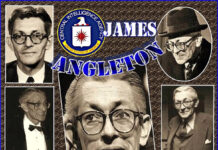
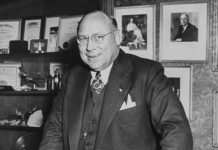
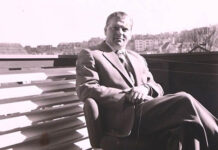
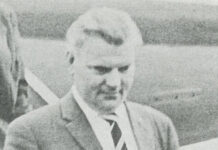



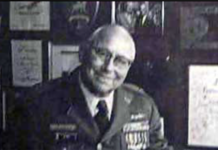
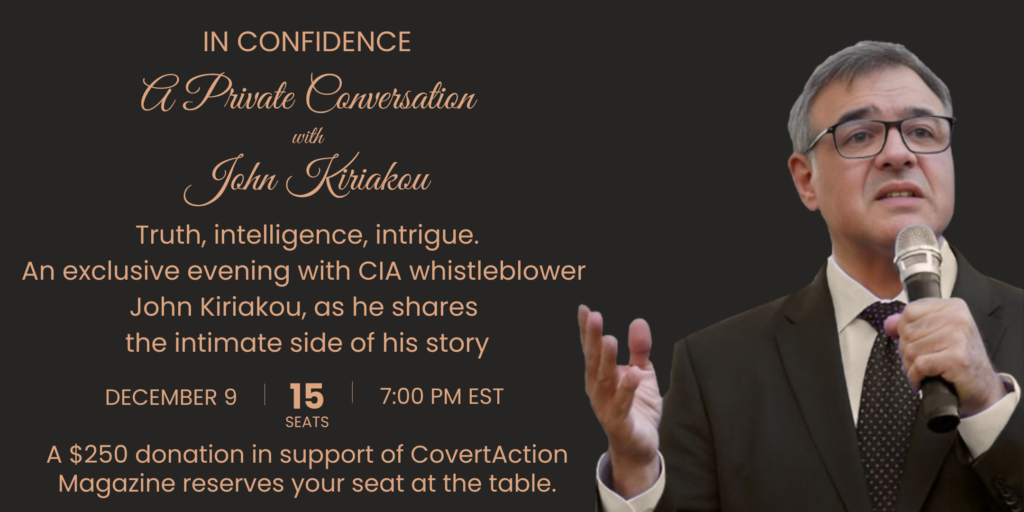
If Johnson genuinely did not know who was behind the JFK assassination, as some people incorrectly claim, then he would have taken to the skies immediately rather than be a sitting duck. This was the advice that some Secret Service agents gave him. Swearing in as president could take place later.
Johnson would also have left the physicians at Parkfield Hospital to get on with their job of carrying out the autopsy as this might reveal clues. Instead, he ordered the seizure of the body so that it could be re-constructed so as to fit in with the official lone gunman fiction.
For many years, I could not understand why Johnson would give up all the power he had as Leader of the Senate in order to become vice president. However, Johnson possessed a copy of JFK’s medical records and knew that he was very ill and might die in office or have to resign through ill health. And, of course, assassination was always a possibility.
Worth pointing out that Johnson blackmailed JFK into making him his running mate. He had actually chosen Senator Stuart Symington but, before the announcement could be made, he had to go for Johnson instead. FBI files supplied by Hoover made this change possible and necessary.
Remember the fact that most Americans under the age of 45 are Democrats and that most of them want to burn Donbass all the way to Moscow.
https://www.youtube.com/watch?v=CWtU9FAclmk&list=RDCWtU9FAclmk&start_radio=1
There are no more peace songs and hippies promoting peace.